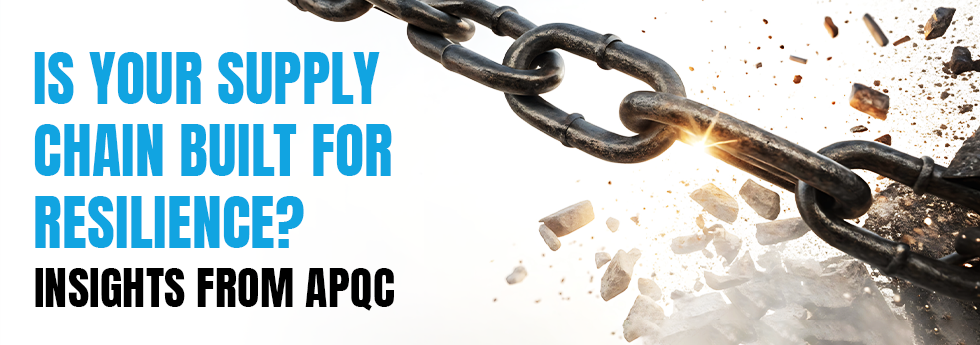With global disruptions becoming the new norm, Supply chain resilience is no longer a buzzword, it’s a business imperative. The recently released Supply Chain Resilience: Cross-Industry Report from APQC, based on insights from over 550 global supply chain professionals, provides a reality check on where organizations stand today.
Inhaltsverzeichnis
ToggleKey Insights from the report
- At the median, only 30 percent of active supplier spend can be shifted to pre-qualified backup suppliers in case of disruption.
- Just 28 percent of revenue comes from products that can be manufactured at more than one plant or location, limiting production flexibility.
- Only 13 percent of organizations have a truly dynamic contingency playbook with resilience embedded across all functions.
These statistics highlight the urgent need for organizations to strengthen their procurement and supply chain operations with greater flexibility, risk management, and digital preparedness.
How MeRLIN Enables Resilient Supply Chains
MeRLIN helps procurement and sourcing leaders proactively manage supply chain disruptions through:
- Advanced supplier risk visibility and multi-sourcing capabilities
- Dynamic sourcing workflows with what-if scenario planning
- Real-time analytics to monitor supply chain risks and performance
- Configurable supplier qualification and contingency frameworks
With MeRLIN, organizations can move from reactive firefighting to proactive resilience planning, ensuring continuity and competitiveness in an unpredictable environment.
Conclusion
Resilience isn’t built overnight, it requires the right processes, tools, and mindset. As global uncertainties continue to impact supply chains, procurement leaders must take a strategic, tech-enabled approach to be better prepared for the next disruption.
Explore the complete APQC report by registering here
To discover how MeRLIN helps build a resilient supply chain, visit us.



